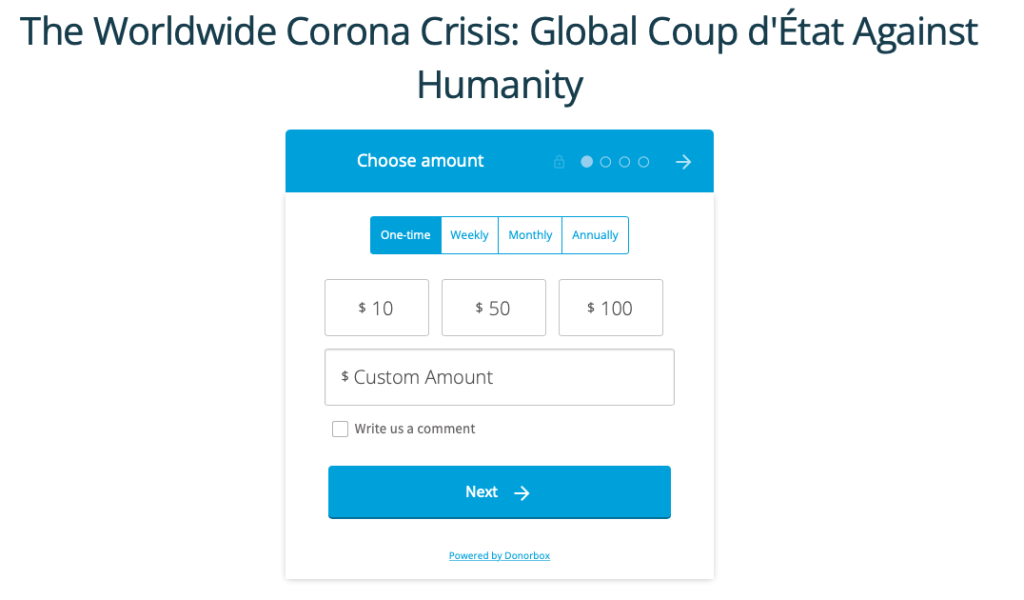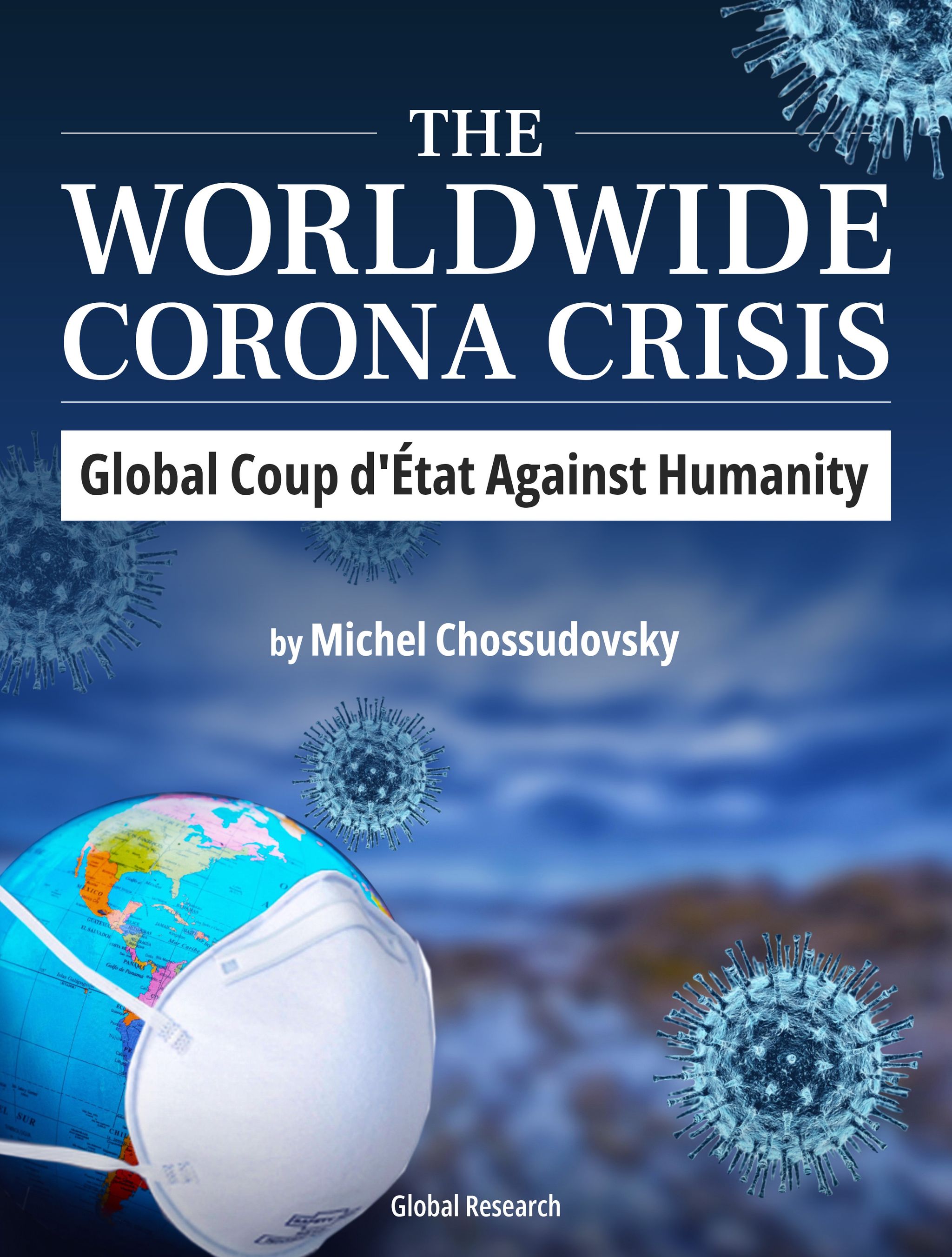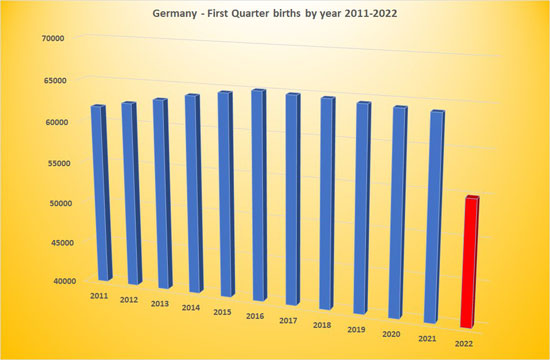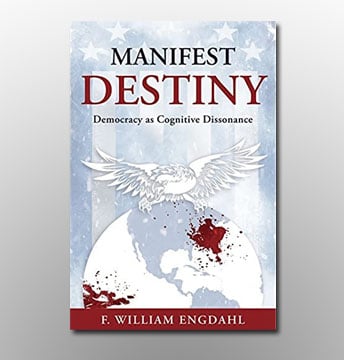All Global Research articles can be read in 51 languages by activating the “Translate Website” drop down menu on the top banner of our home page (Desktop version).
To receive Global Research’s Daily Newsletter (selected articles), click here.
Follow us on Instagram and Twitter and subscribe to our Telegram Channel. Feel free to repost and share widely Global Research articles.
***
On August 27th, New York Times reporter Matt Richtel published an article entitled “This Teen Was Prescribed 10 Psychiatric Drugs: She’s Not Alone.” The article begins as an honest indictment of psychiatry’s rising irresponsible practice of over prescribing multiple powerful drugs for teens struggling with anxiety, depression and other behavioral disorders. Richtel states the problem clearly.
“Many psychiatric drugs commonly prescribed to adolescents are not approved for people under 18. And they are being prescribed in combinations that have not been studied for safety or for their long-term impact on the developing brain.” The practice of prescribing multiple psychiatric drugs, known as polypharmacy, to any given patient has “gone mainstream.”
Many of these drugs, such as the entire class of selective serotonin reuptake inhibitors, or SSRIs, carry black box warnings. Because psychiatry has never proven itself as an exact science, physicians frequently experiment by switching drugs, prescribing drugs for conditions they were not licensed for, and combining drugs into highly toxic cocktails. The Times article documents several cases where young adults were taking 9 and 10 drugs simply for a diagnosis of anxiety and depression. In practice, psychiatry is largely based on guesswork rather than empirical evidence.
Admirably, Richtel’s article identifies a crucial problem in modern psychiatric practice for treating common mental disorders. However it suffers from the sin of omission. It fails to specifically identify the nature of the teen’s suffering from polypharmacy practice.
Nor does Richtel mention that these drugs commonly cause the very mental illnesses they are prescribed to relieve. He also fails to mention that the entire Chemical Imbalance Theory upon which psychiatric medication for depression is based remains unproven. As we will explore in detail, the theory may be completely erroneous as a fundamental tenet for treating such disorders with drugs.
Richtel’s omissions are no surprise. The New York Times and the National Institute of Mental Health that the newspaper writes on behalf of has lost all credibility for promoting blatant psychiatric quackery. Having been one of the nation’s loudest media cheerleaders for US military interventions in the Middle East, when did the Times ever take responsibility for accurately reporting on the high rates of suicide among military personnel due to the overprescribing of psychiatric medications? It is now well established that SSRIs contribute to suicidal and homicidal ideation. This was the reason for the CDC slapping a black box warning on SSRIs. By omitting the most important facts regarding the failures of SSRIs and other psychopharmaceutical drugs, the mainstream media and the entire psychiatric establishment has been manufacturing madness for decades. So where has the Times and the mainstream media been for the past fifty years when reporting the actual cause of anxiety and depression, and offering legitimate criticisms for prescribing SSRIs and other medications.
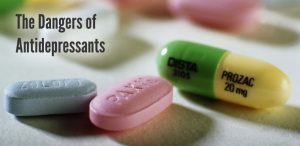
In 1986, the pharmaceutical company Eli Lilly released its antidepressant drug Prozac, the world’s first SSRI. Prozac has been called a wonder drug. Since its approval over fifteen other SSRIs, including Paxil, Zoloft, Luvox, and Celexa are now commonly prescribed for depression, obsessive compulsive disorder, anxiety and post traumatic stress.
The popularity of SSRIs has skyrocketed. Today, one in every six Americans, approximately 77 million Americans, is taking psychiatric medication, and a quarter of these are long term users. Forty-five million and 31 million for depression and anxiety respectively.
This ratio jumps to an incredible 21% among women between the ages of 45 and 64. During the first couple months of the Covid-19 pandemic prescriptions for depression, anxiety and insomnia increased by 21 percent. Worldwide, mental illness is now the leading cause of disability among children. Since 2015, antidepressant use among children between 5-12 has grown 41 percent, the majority being boys.
Active members and veterans of the US military have become especially dependent on psychiatric medications. Seventeen percent of active duty service members are currently taking antidepressants, sedatives, and other psychiatric drugs, which is 7 percent higher than the wider US population. In 2020 the Department of Veterans Affairs reported that it needed to spend $682 million more in 2021 to deal with the epidemic of mental health disorders within the military. Fifty three million dollars was necessary for suicide protection alone, which now averages 20 suicides per day. A decade ago, the Pentagon spent $280 million on psychiatric drugs.
Along with the rise in antidepressant use, there has been a surge in the creation of many new clinical diagnoses for mental disorders. What would have been considered just a few years ago to be rebellious behavior among teenagers is now termed Oppositional Defiant disorder; what was once looked upon as a child not wanting to do math homework is now classified as Mathematics Disorder.
The latest edition of the Diagnostic and Statistical Manual of Mental Disorders (DSM-5) includes normal behaviors that have been pathologized as mental disorders. These include Binge Eating Disorder, Caffeine Withdrawal, Hoarding Disorder and Social Communication Withdrawal. As the psychiatric establishment increasingly asserts its importance by pathologizing normal human behaviors, tens of millions of Americans are popping pills in an attempt to find mental wellbeing. All the while, Big Pharma is making a killing; antidepressant drug sales alone are predicted to top $22 billion by 2027 and global sales for all psychiatric drugs are anticipated to reach $41 billion by 2025.
Considering how widely SSRIs are prescribed, you would be forgiven for thinking that this class of drugs is highly safe and effective. In point of fact, these drugs come with a host of devastating and sometimes deadly health implications. Examining the state of the medical industrial complex deeper still makes one thing abundantly clear: Psychiatry is NOT a science but a massively destructive unscientific experiment fueled by a medical industrial complex that values profits over human life and wellbeing.
Let’s break it down:
FACT: Psychiatric Drugs are Dangerous
Volumes of solid scientific evidence demonstrate that SSRIs carry serious and sometimes deadly side effects. These adverse effects include akathisia (a condition in which a person feels compelled to move about), permanent neurological damage, bone fracture, birth defects, sexual dysfunction, suicide (especially in children and teenagers) and acts of violence.[1-5] Shockingly, evidence indicates that SSRI use in patients can, in fact, exacerbate and lengthen bouts of depression and significantly promote relapse.[6]

Most alarming has been the relationship between suicides and psychiatric drug use. The year 2021 saw suicide among military personnel reach an all time high. Since 911, the number of active duty and veteran suicides is over four times greater than actual combat causalities. In other words, more active-duty American soldiers are ending their own lives than are dying in battle. Could it be that the rising rates of suicide among members of the US military are being fueled by SSRIs and other psychiatric medications? A body of research suggests that the answer is yes.
A meta-analysis appearing in the British Medical Journal, which pooled data from more than 700 studies and 87,650 patients, found that that there exists an “association between the use of SSRIs and increased risk of fatal and non-fatal suicide attempts” The researchers stated in their conclusion that methodological limitations may have caused them to actually underestimate the real risk of suicide.[7]
In 2004, the FDA required SSRI manufactures to place a black box label on SSRI drugs stating suicide as a lethal side effect. How many more deaths have to occur before the FDA bans these dangerous medications altogether?
FACT: Psychiatric Drugs are NOT Effective
Back in 1967, a British psychiatrist proposed the Chemical Imbalance Theory, which established a template for future research to search for mental disorders in chemical imbalances that may be observed in the brain. It is also the underlying basis for the belief that the neurotransmitter serotonin is responsible for what has become the Serotonin Theory of Depression. However, a large state of the art “umbrella review evaluation” conducted by a consortium of eight universities investigated the relationship between serotonin and depression and found that there is no convincing evidence to make this claim. Furthermore, many studies show that SSRIs are generally no more effective than a placebo (sugar pill) for treating depression. The authors of one meta-analysis examining the effectiveness of using SSRIs in patients with depression remarked that:
“These findings suggest that, compared with placebo, the new-generation antidepressants do not produce clinically significant improvements in depression in patients who initially have moderate or even very severe depression, but show significant effects only in the most severely depressed patients”[8]
Upon closer investigation, it’s little wonder that these drugs aren’t efficacious. Psychiatric authorities still contend that mental illness has its roots in “chemical imbalances” in the brain that may be mediated through pharmaceuticals. The only problem is that there is no compelling evidence to confirm this hypothesis. To the contrary, there is increasing evidence to debunk the chemical imbalance theory altogether. Furthermore, studies prove that SSRIs can adversely interfere and disturb normal brain function; SSRIs ultimately reduce the brain’s ability to respond to serotonin.[9] This is a possible reason that many individuals on SSRIs are more likely to suffer from depression for longer periods of time, and relapse more frequently.
FACT: Psychiatric Diagnoses Have No Basis in Science
The American Psychiatric Association’s Fifth Edition of the Diagnostic and Statistical Manual of Mental Disorders (DSM-5) is the definitive guide for psychiatric diagnoses. Of the nearly 300 mental disorders outlined in the DSM-5, the criteria for determining mental illness are based solely on subjectively measured and described behaviors. There are no blood tests, no brain scans or urine samples- not one biological marker to validate the existence of these so-called conditions.
The flawed nature of conventional mental health diagnoses has been pointed out for years. In a 2010 opinion piece for the Los Angeles Times, Allen Frances, chairman of the taskforce that created the DSM-4, commented on the absurdity of the ever-expanding pool of mental disorders stating the following:
“The first draft of the next edition of the DSM, posted for comment with much fanfare last month, is filled with suggestions that would multiply our mistakes and extend the reach of psychiatry dramatically deeper into the ever-shrinking domain of the normal. This wholesale medical imperialization of normality could potentially create tens of millions of innocent bystanders who would be mislabeled as having a mental disorder. The pharmaceutical industry would have a field day — despite the lack of solid evidence of any effective treatments for these newly proposed diagnoses.”
Even more damning was a deathbed confession in 2009 by the eminent child psychiatrist, Dr. Leon Eisenberg. In his final interview, Eisenberg reportedly revealed that “ADHD is a prime example of a fictitious disease.” The bombshell came at the end of Eisenberg’s long career developing foundational theories in modern psychiatry that led to the creation of ADHD and other mental disorders.
Given the lack of scientific rigor with which the APA concocts new disorders, it shouldn’t come as a surprise that the DMS-5 even outlines “internet gaming disorder” as a brain abnormality that warrants further study. The bottom line is that psychiatry’s DSM handbook has as much credibility as a comic book.
FACT: The Psychiatric Establishment is Bought and Paid for by Big Pharma
Like the other branches of the medical-industrial complex, psychiatry is infested with conflicts of interest. One of the most outspoken critics of the pharmaceutical industry’s extensive influence over modern medicine is Dr. Marcia Angell, the former editor-in-chief of the New England Journal of Medicine who is currently on the faculty at Harvard University’s School of Public Health.
In her New York Book Review article, Dr. Angell recounts the systemic corruption that has plagued the field of psychiatry:
“As psychiatry became a drug-intensive specialty, the pharmaceutical industry was quick to see the advantages of forming an alliance with the psychiatric profession. Drug companies began to lavish attention and largesse on psychiatrists, both individually and collectively, directly and indirectly. They showered gifts and free samples on practicing psychiatrists, hired them as consultants and speakers, bought them meals, helped pay for them to attend conferences, and supplied them with “educational” materials. When Minnesota and Vermont implemented “sunshine laws” that require drug companies to report all payments to doctors, psychiatrists were found to receive more money than physicians in any other specialty. The pharmaceutical industry also subsidizes meetings of the APA and other psychiatric conferences. About a fifth of APA funding now comes from drug companies.”
Dr. Angell goes on to describe how pharmaceutical companies manipulate study results to maximize profit streams from their drugs:
“…drug companies make very sure that their positive studies are published in medical journals and doctors know about them, while the negative ones often languish unseen within the FDA, which regards them as proprietary and therefore confidential. This practice greatly biases the medical literature, medical education, and treatment decisions.”
Upon further investigation not only are unfavorable clinical trial results concealed while positive results are highlighted and publicized, but the pharmaceutical industry has been embroiled in scandals involving fabricated study results. In one case, Dr. Scott S Reuben, a Massachusetts anesthesiologist and researcher, allegedly faked data for 21 studies on major medications. Several of the drugs reviewed in Reuben’s studies, including Wyeth’s antidepressant, Effexor FX, were presented in a favorable light without any supporting clinical evidence.
In our opinion, professional dishonesty is rampant in modernpsychiary. In 2013 The Economist published an article entitled “Unreliable Research: Trouble at the Lab.” The paper covered the work of Dr. Daniele Fanelli at the University of Edinburgh, who studied the flaws of scientific research conducted at academic institutions. Dr. Fanelli stated that fraud is likely second to incompetence in generating erroneous results — although determining the difference is difficult. Dr Fanelli evaluated 21 separate surveys by academics (mostly in the biomedical sciences but also in civil engineering, chemistry and economics) carried out across a 21 year period (1987 to 2008). Only 2% of respondents admitted falsifying or fabricating data, but 28% of respondents claimed to know of colleagues who engaged in questionable research practices.
Collusion and deception have become hallmarks of the medical establishment. Here are some examples of psychiatry’s corruption by the pharmaceutical cartel.
Psychologist Lisa Cosgrove and her colleagues examined the conflicts of interest among the panel members tasked with updating the DSM-5 handbook. Her study noted that “69% of the DSM-5 task force members report having ties to the pharmaceutical industry. This represents a relative increase of 21% over the proportion of DSM-IV task force members with such ties (57% of DSM-IV task force members had ties).”[10]
Cosgrove points out that panel members are eligible to help edit the DSM as long as they are not paid more than $10,000 from drug companies per year (through consultancies and other jobs). In addition, members are permitted to own up to $50,000 in stock holdings in pharmaceutical firms and still serve in their position.
Moreover, the American Psychiatric Association meets in secret to develop the DSM. All of the task force members are required to sign non-disclosure agreements. This practice has been assailed by many, even former DSM chairman Robert Spitzer, who stated in an interview that “When I first heard about this agreement, I just went bonkers…transparency is necessary if the document is to have credibility.”[11]
Groups such as the National Alliance on Mental Illness (NAMI) and the Anxiety and Depression Association of America (ADAA), which were allegedly founded to advocate on behalf of people with mental disorders, have been challenged for operating as front groups created to push the pharmaceutical industry’s profit-driven agenda.
In the 1970s and 1980s, leaders at the National Institute of Mental Health played a key role in helping found these professional organizations, such as NAMI, in order to enable drug companies to effectively lobby lawmakers in Washington and state capitols to fund more psychiatric research. These organizations have enjoyed a steady stream of generous financial support from drug makers for decades.
Psychiatrist Dr. Peter Breggin has alleged that NAMI is the “astroturf lobbying organization… for the psychopharmaceutical complex.” The organization controls 70 percent of the mainstream media’s messaging about mental health and psychological disorders. Its corporate sponsors are a Who’s Who of the nation’s largest firms in the drug and chemical industries, Wall Street banks, the most influential Silicon Valley companies and the major media networks. It dominates social media, with over 160 million impressions, to advance psychiatry’s drug-based model for dealing with mental illness.
In a single year NAMI spent $3.5 million to grab state organizations to advocate on its behalf through its many hundreds of local chapters in every US state. And in 2021, NAMI’s annual report called for $2.1 billion of additional funding to advance its influence over state psychiatric organizations and the media. It is currently in a collaboration with Google to embark on an initiative that would flag internet searchers for psychological related disorders, such as anxiety, depression, obsessive compulsion, etc, thereby incorporating a vehicle for the psychiatric and drug industry to identify and reach out to internet users who may suffer from these mental afflictions. Very likely, this initiative will generate algorithms for pharmaceutical ads targeting the specific searches people make.
Given the overwhelming evidence implicating modern psychiatry as a sick and twisted farce designed to profit from human suffering, how could it be that this issue doesn’t receive any substantive media coverage? Why hasn’t this been exposed by The New York Times, CNN and MSNBC, or 60 Minutes? Could it be the hundreds of millions of dollars in advertising that the corporate media receives from Big Pharma each year? Perhaps this could lead to self-censorship.
The Dangers of SSRIs
We need to take a deeper look at the dangers associated with SSRIs. The most controversial issue surrounding the use of SSRIs–a possible connection to suicidal and homicidal thoughts and behavior in some users–made news in mid-2003 when the Food and Drug Administration recommended that Paxil not be used to treat depressed children and adolescents because regulators were reviewing reports from clinical trials of an increased risk of suicidal thinking and suicide attempts in young users.[12]
Although the Prozac era has ended for Eli Lilly, the availability of less costly generics means that fluoxetine may be more affordable for tens of millions of uninsured people. In addition to gaining approval for Prozac for indications besides depression (obsessive-compulsive disorder, bulimia nervosa, and panic disorder), Eli Lilly now markets two Prozac-related products that have their own patents: Sarafem is the version of Prozac approved for the treatment of premenstrual dysphoric disorder (PMDD).[13] It was the first prescription drug in the US with this indication. The second drug is Prozac Weekly, intended for the longer-term treatment of depression when symptoms have stabilized.[14]
IQVia (formerly IMS Health) has observed a trend toward “lifestyle indications” for antidepressants.[15] In addition to major depression and OCD, both Paxil and Zoloft are indicated for panic disorder, posttraumatic stress disorder, and social anxiety disorder. Zoloft also is approved for premenstrual dysphoric disorder, while Paxil is approved for generalized anxiety disorder. [16-17] Doctors, for their part, prescribe SSRIs for a wide range of conditions, such as headaches, substance abuse, eating disorders, back pain, impulsivity, upset stomach, irritability, hair pulling, nail biting, premature ejaculation, sexual addictions, and attention deficit disorder.[18]
One growing market for SSRIs and other psychiatric medications is young children and adolescents. This is despite some studies showing that antidepressants are no more effective than placebos in these patients.[19-22] Another study in the Journal of the American Medical Association found that psychotropic medications prescribed to preschoolers has rapidly increased.[23]
An analysis of prescription claims among young Medicaid patients in North Carolina found that the use of Ritalin-type stimulants and Prozac-type antidepressants among children rose dramatically and that more were taking both drugs at once. Current figures record that 1 in 5 children have a mental health problem: 43 percent increase in ADHD, 37% rise in teen depression, and 200 percent increase in suicides among adolescents between 10-14 years of age. For 2020, the IQVia patient tracker database records over 6.1 million persons between 0-17 years of age on some type of psychiatric medication. Breaking down this statistic, 2.1 million are antidepressants, 3.1 million are taking anti-ADHD drugs such as Adderall, and another 1.2 million are on anti-anxiety drugs. Writing about the increase in psychiatric drugs prescribed for younger people, Jerry Rushton, MD, MPH, commented, “… the consistent increase in SSRI use and in dual prescriptions is especially surprising. We need further information about whether this is due to new unrecognized mental disorders, substitution for other therapies, or overprescription.”
Serotonin and side effects
Prozac relieves depression by affecting the level of serotonin, a neurotransmitter that connects receptor sites and fires nerve cells. Joseph Glenmullen, MD, a clinical instructor in psychiatry at Harvard Medical School, explains in his book Prozac Backlash that the drug inhibits the reuptake of serotonin–a process in which a cell that releases this chemical messenger reabsorbs any unused portion of it. By blocking the reuptake of this neurotransmitter, Prozac boosts the level of serotonin and prolongs the serotonin signals in the brain.[24]
Dr. Glenmullen points out, however, that neurotransmitters like serotonin, adrenaline, and dopamine are connected by complex circuitry and function interdependently.
Changes in one neurotransmitter can set off changes in another. Thus, the idea that Prozac-type drugs work “selectively” on serotonin is an illusion. When the level of serotonin is artificially increased, the primary reaction in the brain is a drop in dopamine–a powerful secondary effect that was not understood when the new class of serotonin boosters was introduced. The severe effects of the SSRIs are thought to be caused by the connections between the serotonin and dopamine systems. “Drugs producing a dopamine drop are well known to cause the dangerous side effects that are now appearing with Prozac and the other drugs in its class,” Dr. Glenmullen writes. His term for these compensatory reactions in the brain is “Prozac backlash.”[25]
Dr. Peter Breggin has also reported in Talking Back to Prozac: What Doctors Aren’t Telling You About Today’s Most Controversial Drug, that Prozac acts as a stimulant to the nervous system.[26] Therefore, it can produce side effects that mimic those of amphetamines and are exaggerations of the desired effects of Prozac in relieving depression.
According to Dr. Breggin, the FDA psychiatrist who wrote the agency’s safety review of Prozac, the drug’s effects–including nausea, insomnia, and nervousness–resemble the profile of a stimulant drug rather than a sedative. He notes that nearly all of the Prozac side effects listed in the Physician’s Desk Reference “fit into the stimulant profile.” Among others, these stimulant symptoms include headaches, nervousness, insomnia, anxiety, agitation, tremors, weight loss, nausea, diarrhea, mouth dryness, anorexia, and excessive sweating. He adds in The Antidepressant Fact Book that all of the SSRIs can cause insomnia, anxiety, agitation, and nervousness. These same effects and others are caused by the classic stimulants–methylphenidate, amphetamine, methamphetamine, Ecstasy, and cocaine. [27]
A drug that acts as a stimulant can also overstimulate the body systems. In Talking Back to Prozac, Dr. Breggin offers the example of a person who takes Prozac to relieve depression (the beneficial effect) and suffers from agitation and insomnia (the negative effects). These adverse reactions “are inherent in the stimulant effect that produces feelings of energy and well-being,” he writes. “In this sense, the difference between ‘therapeutic effects’ and ‘toxic effects’ are merely steps along a continuum from mild to extreme toxicity.”[28]
Between 2004 and 2019, the FDA’s Adverse Events Reporting System or FAERS reported over 7.3 million adverse events for 30 different antidepressants on the market. Across the board, SSRIs were the most responsible; however, one reason may be that SSRIs are more prescribed. It is not unusual for serious adverse effects to surface after a drug hits the market. Only then is a major new warning added to the label or the drug be withdrawn. The FDA informs doctors, but not the public that the approval of a drug does not mean it is safe.
In 2004, the FDA was compelled to issue a black box warning on virtually all antidepressant drugs. Four years later the FDA instituted a black box warning for all second generation antipsychotics due to rising deaths among elderly patients. It is not uncommon for drugs to eventually undergo greater scrutiny after they have been on the market for longer periods of time and drug injuries and deaths increase. It is estimated that there is a 20% chance that problems will arise with any given drug after its approval. One group of researchers stated, “The safety of new agents cannot be known with certainty until a drug has been on the market for many years.” Now that pharmaceutical companies have easier access to fast track new drugs off the production line through the FDA’s regulatory review process, there has been a noticeable increase in black box warning for new drugs.
Dr. Glenmullen says that popular psychiatric drugs follow a “10-20-30 year pattern” in revealing their dangerous effects and falling into disfavor: About 10 years after their debut, the earliest signs of problems appear. At 20 years, there is enough data for the problems to be undeniable and a significant number of physicians to voice their concerns. At 20 years (or more), professional organizations and regulators actively work to stop overprescribing of the drug. At this point, drugs have become passé and lose their patent protection, and the manufacturers move on to more profitable drugs “that can be promoted as ‘safer’ because their hazards are not yet known.” [29]
Comparisons of efficacy
SSRIs have no more specific effect on depression than do other antidepressants, including the tricycles and monoamine-oxidase inhibitors (MAOIs), according to Charles Medawar. As he explains in The Antidepressant Web, patients generally respond to antidepressants in about 60% to 70% of cases, while the typical response to placebo is 30% to 35%. Therefore, the popularity of SSRIs is due to the fact that most experts believe they are safer or otherwise more acceptable than the alternatives. And, in fact, promotional messages for SSRIs state three advantages: the drugs produce fewer unwanted side effects, are more acceptable to more patients, and are safer when overdosed.[30]
Despite the safety-related claims made in the medical literature, “the evidence overall does not suggest that SSRIs show any great and decisive safety advantage over alternatives in day to day use,” says Medawar. Consider the results of trials comparing SSRI efficacy and safety with that of other antidepressants: “Two independent meta-analyses, each starting with a careful search of the literature to identify all properly controlled trials, have reached broadly similar conclusions–the SSRIs do have the edge on alternatives, but not by much.”[31] One analysis of 62 trials found a 49% dropout rate for SSRIs versus a 54% rate for tricyclic antidepressants. A second analysis of 63 trials (16 comparing an SSRI with a nontricyclic) found that 3% fewer people stopped taking an SSRI because of the side effects. [32]
Other reviews also have found that the newer antidepressants are no more or less effective in treating depression than older-generation drugs. In a government study conducted by Dr. Cynthia Mulrow and colleagues, the researchers analyzed more than 300 randomized controlled trials and concluded there were no significant differences in efficacy between newer and older agents or in overall discontinuation rates.[33-34] Fewer people taking SSRIs stopped treatment due to adverse effects than those taking first-generation tricyclics (the rate difference was 4%). More than 80 studies found that newer antidepressants were more effective than placebo in treating major depression in adults. The response rate was 50% for the drugs, versus 32% for a placebo.
A more disturbing conclusion was reached by Dr. Irving Kirsch and colleagues who analyzed data sent to the FDA for approval of the six most commonly prescribed antidepressants over the course of a dozen years (Prozac, Paxil, Zoloft, Effexor, Serzone, and Celexa). Their analysis found that the response to placebo was almost as great as the response to the antidepressants. The mean difference on the Hamilton Rating Scale for Depression was two points, according to a report in Psychiatric Times. The difference was statistically, but not clinically, significant. The article states, “More than half of the clinical trials sponsored by the pharmaceutical companies failed to find significant drug/placebo difference, and there were no advantages to higher doses of antidepressants.” The authors add, “The small difference between antidepressant and placebo has been referred to as a ‘dirty little secret’ by clinical trial researchers …”[35]
Several recent studies have reported similar results, finding that an SSRI did not differ significantly from placebo in the treatment of depression.[36]
*
Note to readers: Please click the share buttons above or below. Follow us on Instagram and Twitter and subscribe to our Telegram Channel. Feel free to repost and share widely Global Research articles.
Richard Gale is the Executive Producer of the Progressive Radio Network and a former Senior Research Analyst in the biotechnology and genomic industries.
Dr. Gary Null is host of the nation’s longest running public radio program on alternative and nutritional health and a multi-award-winning documentary film director, including his recent Last Call to Tomorrow
They are regular contributors to Global Research.
Notes
[1] Koliscak, Lindsey P., and Eugene H. Makela. “Selective serotonin reuptake inhibitor-induced akathisia.” Journal of the American Pharmacists Association 49.2 (2009): e28-e38. Print.
[2] Wu, Q., A. F. Bencaz, J. G. Hentz, and M. D. Crowell. “Selective serotonin reuptake inhibitor treatment and risk of fractures: a meta-analysis of cohort and case–control studies.” Osteoporosis International 23.1 (2012): 365-375. Print.
[3] Bahrick, Audrey (2008). “Persistence of Sexual Dysfunction Side Effects after Discontinuation of Antidepressant Medications: Emerging Evidence”. The Open Psychology Journal 1: 42–50. Retrieved 30 January 2014.
[4] Olfson M, Marcus SC, Shaffer D (August 2006). “Antidepressant drug therapy and suicide in severely depressed children and adults: A case-control study”. Archives of General Psychiatry 63 (8): 865–72.
[5] Henry, Chantal, and Jacques Demotes-Mainard. “SSRIs, Suicide and Violent Behavior: Is there a Need for a Better Definition of the Depressive State?.” Current Drug Safety 1.1 (2006): 59-62. pubmed.gov. Web. 18 Mar. 2014.
[6] van Weel-Baumgarten, EM, et al. “Treatment of depression related to recurrence: 10-year follow-up in general practice.” Journal of Clinical of Pharmacy and Therapeutics 25.1 (2005): 61-6. pubmed.gov. Web. 24 Mar. 2014.
[7] Fergusson , Dean, et al.. “Association between suicide attempts and selective serotonin reuptake inhibitors: systematic review of randomised controlled trials.” British Medical Journal 330 (2005): n. pag. BMJ.com. Web. 17 Mar. 2014.
[8] Kirsch, Irving, Brett J. Deacon, Tania B. Huedo-Medina, Alan Scoboria, Thomas J. Moore, and Blair T. Johnson. “Initial Severity And Antidepressant Benefits: A Meta-Analysis Of Data Submitted To The Food And Drug Administration.” PLoS Medicine 5.2 (2008): e45. plosmedicine.org. Web. 18 Mar. 2014.
[9] Andrews, Paul W, et al.. “Blue again: perturbational effects of antidepressants suggest monoaminergic homeostasis in major depression .” Fronteirs in Psychology July (2011): n. pag. journal.frontiersin.org. Web. 17 Mar. 2014.
[10] Cosgrove, Lisa, and Sheldon Krimsky. “A Comparison of DSM-IV and DSM-5 Panel Members’ Financial Associations with Industry: A Pernicious Problem Persists.” PLoS Medicine 9.3 (2012): e1001190. plosmedicine.org. Web. 18 Mar. 2014.
[11] Carey, Benedict. “Psychiatry’s Struggle to Revise The Book of Human Troubles.” The New York Times. The New York Times, 17 Dec. 2008. Web. 27 Mar. 2014.
[12] U.S. Food and Drug Administration. FDA talk paper: FDA statement regarding the anti-depressant Paxil for pediatric population. June 19, 2003.
[13] U.S. Food and Drug Administration (FDA). New treatment approved for severe premenstrual symptoms. FDA Consumer magazine, Sep-Oct. 2000.
[14] U.S. Food and Drug Administration (FDA). Weekly Prozac dosage: treatment alternative for depression. FDA Consumer magazine, May-June 2001.
[15] IMS Health. Lifestyle indications for antidepressants. April 4, 2000. From www.ims-global.com/insight/news_story/news_story_000404b.htm.
[16] GlaxoSmithKline. Prescribing information for Paxil (paroxetine hydrochloride) Tablets and Oral Suspension. August 2003. From www.us.gsk.com/products/assets/us_paxil.pdf.
[17] Pfizer Inc. Prescribing information for Zoloft (sertraline hydrochloride) Tablets and Oral Concentrate. Revised September 2003. From www.pfizer.com/download/uspi_zoloft.pdf.
[18] Glenmullen, Joseph, M.D. Prozac backlash: overcoming the dangers of Prozac, Zoloft, Paxil, and other antidepressants with safe, effective alternatives. Touchstone, Simon & Schuster, New York, 2000, p. 14.
[19] Leonard M. Children are the hot new market for antidepressants. But is this how to make them feel better? Boston Sunday Globe, May 25, 1997, D1, D5 (cited in Glenmullen).
[20] Strauch B. Use of antidepression medicine for young patients has soared. New York Times, August 10, 1997, 1 (cited in Glenmullen).
[21] Martin A, Leslie D. Trends in psychotropic medication costs for children and adolescents, 1997-2000. Arch Pediatr Adolesc Med 2003 Oct; 157(10):997-1004.
[22] Fisher RL and Fisher S. Antidepressants for children. Is scientific support necessary? J Nerv Ment Dis 1996; 184:99-102 (cited in Glenmullen).
[23] Pellegrino D. Commentary: Clinical judgement, scientific data, and ethics: antidepressant therapy in adolescents and children. J Nerv Ment Dis 1996; 184:106-8 (cited in Glenmullen).
[24] Glenmullen, op. cit., p. 17.
[25] Ibid, pp. 17-20.
[26] Breggin, P.R., and Breggin, G.R. Talking back to Prozac: What doctors aren’t telling you about today’s most controversial drug. St. Martin’s Press, New York, 1994, p. 121.
[27] Breggin, P.R. The antidepressant fact book. Perseus Publishing, Cambridge, MA, 2001, p. 46.
[28] Breggin and Breggin, 1994, p. 105.
[29] Glenmullen, op. cit., pp. 12-13.
[30] Medawar C. The antidepressant web–marketing depression and making medicines work. International Journal of Risk & Safety in Medicine 1997;10(2):75-126. Posted online at a Web site operated by Social Audit Ltd., the publishing arm of Public Interest Research Centre Ltd.: Last updated August 8, 2003.
[31] Anderson IM, Tomenson BM. Treatment discontinuation with selective serotonin reuptake inhibitors compared with tricyclic antidepressants: a meta-analysis. Brit Med J 1995 June 3; 310:1433-8 (cited in Medawar).
[32] Song F, Freemantle N, Sheldon TA, et al. Selective serotonin reuptake inhibitors: meta-analysis of efficacy and acceptability. Brit Med J 1993; 306:683-7 (cited in Medawar).
[33] Mulrow CD, Williams JW Jr, Trivedi M, Chiquette E, Aguilar C, et al. Treatment of depression–newer pharmacotherapies. Psychopharmacol Bull 1998; 34(4):409-795.
[34] Geddes JR, Freemantle N, Mason J, Eccles MP, Boynton J. SSRIs versus other antidepressants for depressive disorder. Cochrane Database Syst Rev 2000; (2):CD001851.
[35] Hollon SD, DeRubeis RJ, Shelton RC, Weiss B. The emperor’s new drugs: effect size and moderate effects. Prevention & Treatment, 5 Artical 28, 2002 (cited in Kirsch and Antonuccio).
[36] Hypericum Depression Trial Study Group. Effect of Hypericum perforatum (St John’s wort) in major depressive disorder: a randomized controlled trial. JAMA 2002 Apr 10; 287(14):1807-14.
 Shocking: UK Government Admits COVID Vaccinated Children Are 4423% More Likely to Die of Any Cause & 13,633% More Likely to Die of COVID-19 Than Unvaccinated Children
Shocking: UK Government Admits COVID Vaccinated Children Are 4423% More Likely to Die of Any Cause & 13,633% More Likely to Die of COVID-19 Than Unvaccinated Children Spain Admits Spraying Deadly Chemtrails as Part of Secret UN Program: One Month after March 2020 Covid-19 Lockdown
Spain Admits Spraying Deadly Chemtrails as Part of Secret UN Program: One Month after March 2020 Covid-19 Lockdown The Crisis in Ukraine Is Not About Ukraine. It’s About Germany
The Crisis in Ukraine Is Not About Ukraine. It’s About Germany 11 Year Old Girl Calls Out Klaus Schwab and His Globalist Goons
11 Year Old Girl Calls Out Klaus Schwab and His Globalist Goons Why Was Former President Trump’s Mar-a-Lago Estate Raided?
Why Was Former President Trump’s Mar-a-Lago Estate Raided? Justice Won’t Come From Our “Legal” System. It Will Come From “The Collective Masses”.
Justice Won’t Come From Our “Legal” System. It Will Come From “The Collective Masses”. Global Planned Financial Tsunami Has Just Begun
Global Planned Financial Tsunami Has Just Begun On the Nature of Russia’s Military Campaign in Ukraine. Analysis of Russian Military Strategy
On the Nature of Russia’s Military Campaign in Ukraine. Analysis of Russian Military Strategy The Planned Fall 2022 “Epidemics Tyranny”
The Planned Fall 2022 “Epidemics Tyranny” Covid Vaccination and Turbo-Cancer. “Multiple Tumors in Multiple Organs”. Dr. Ute Kruger
Covid Vaccination and Turbo-Cancer. “Multiple Tumors in Multiple Organs”. Dr. Ute Kruger Video: The Plan. WHO Plans to Have 10 Years of Pandemics (2020-2030). “Proof that the Pandemic was Planned with a Purpose”
Video: The Plan. WHO Plans to Have 10 Years of Pandemics (2020-2030). “Proof that the Pandemic was Planned with a Purpose” PfizerGate: Official Government Reports prove Hundreds of Thousands of People Are Dying Every Single Week Due to COVID-19 Vaccination
PfizerGate: Official Government Reports prove Hundreds of Thousands of People Are Dying Every Single Week Due to COVID-19 Vaccination World Economic Forum Adviser Claims the Planet No Longer Needs the ‘Vast Majority’ of the Population
World Economic Forum Adviser Claims the Planet No Longer Needs the ‘Vast Majority’ of the Population As the COVID Myths Explode, Delusions Are Shattering: Our Exit from Subservience Leads to Nuremberg 2.0
As the COVID Myths Explode, Delusions Are Shattering: Our Exit from Subservience Leads to Nuremberg 2.0 The Most Perniciously Perfect Piece of Propaganda: The Covid Face Mask
The Most Perniciously Perfect Piece of Propaganda: The Covid Face Mask The Cult of Globalism: The Great Reset and Its “Final Solution” for “Useless People”
The Cult of Globalism: The Great Reset and Its “Final Solution” for “Useless People” The “Great Zero Carbon” Conspiracy and the WEF’s “Great Reset”
The “Great Zero Carbon” Conspiracy and the WEF’s “Great Reset” The Next Generation Says Good-Bye to Ursula von der Leyen’s Europe
The Next Generation Says Good-Bye to Ursula von der Leyen’s Europe One Year Later: How the Biden Admin, Big Tech, and Pfizer Fooled Americans into Taking “FDA Approved” COVID Vaccines that Never Actually Existed
One Year Later: How the Biden Admin, Big Tech, and Pfizer Fooled Americans into Taking “FDA Approved” COVID Vaccines that Never Actually Existed


 “The Worldwide Corona Crisis, Global Coup d’Etat Against Humanity”
“The Worldwide Corona Crisis, Global Coup d’Etat Against Humanity”
























